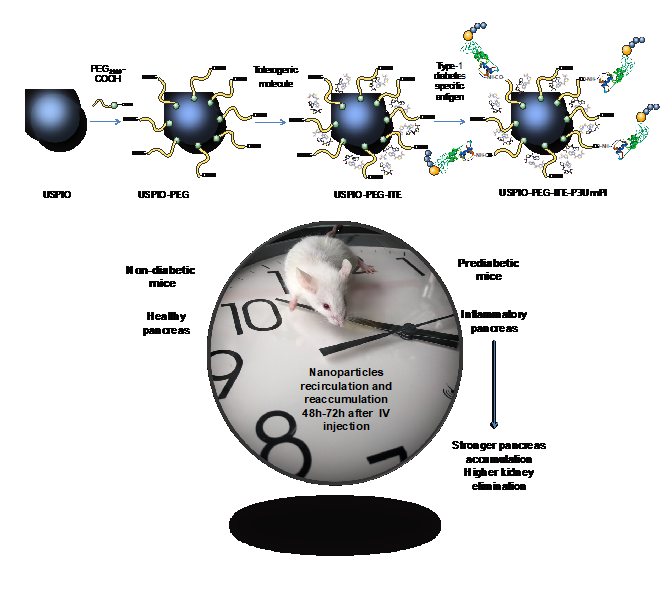
Chloe Dubreil - Odile Sainte Catherine - Yoann Lalatonne - Clément Journé - Phalla Ou - Peter van Endert - Laurence Motte.
First published: 05 September 2018 - https://doi.org/10.1002/smll.201802053
Abstract
Nanoparticle (NP) administration is among the most attractive approaches to exploit the synergy of different copackaged molecules for the same target. In this work, iron oxide NPs are surface-engineered for the copackaging of the autoantigen proinsulin, a major target of adaptive immunity in type 1 diabetes (T1D), and 2-(1′H-indole-3′-carbonyl)-thiazole-4-carboxylic acid methylester (ITE), a small drug conditioning a tolerogenic environment. Magnetic resonance imaging (MRI) combined with magnetic quantification are used to investigate NP biokinetics in nonobese diabetic (NOD) mice and control mice in different organs. Different NP biodistribution, with in particular enhanced kidney elimination and a stronger accumulation in the pancreas for prediabetic NOD mice, is observed. This is related to preferential NP accumulation in the pancreatic inflammatory zone and to enhancement of renal elimination by diabetic nephropathy. For both mouse strains, an MRI T2 contrast enhancement at 72 h in the liver, pancreas, and kidneys, and indicating recirculating NPs, is also found. This unexpected result is confirmed by magnetic quantification at different time points as well as by histological evaluation. Besides, such NPs are potential MRI contrast agents for early diagnosis of T1D.
Small Impact Factor of 9.59




